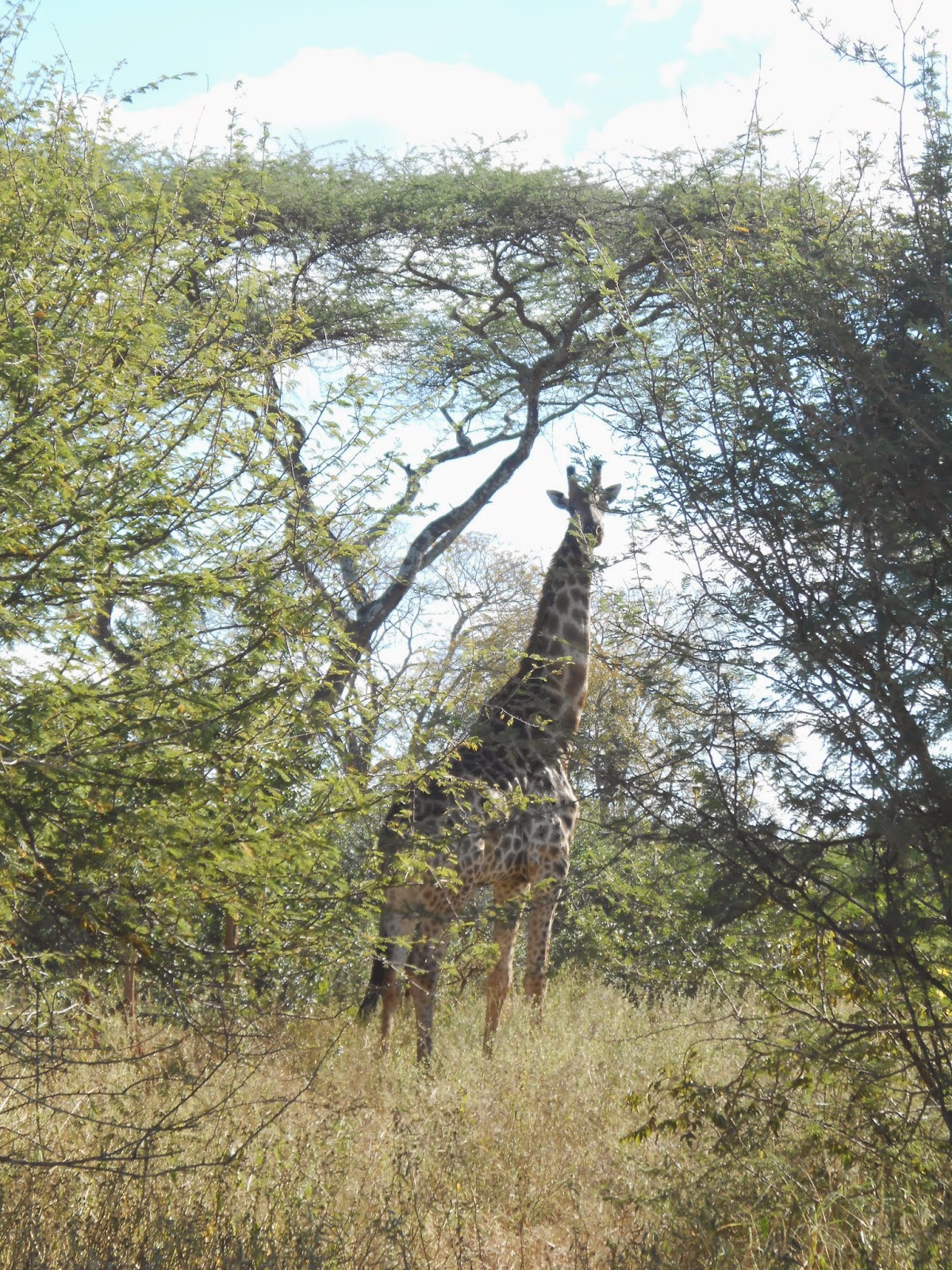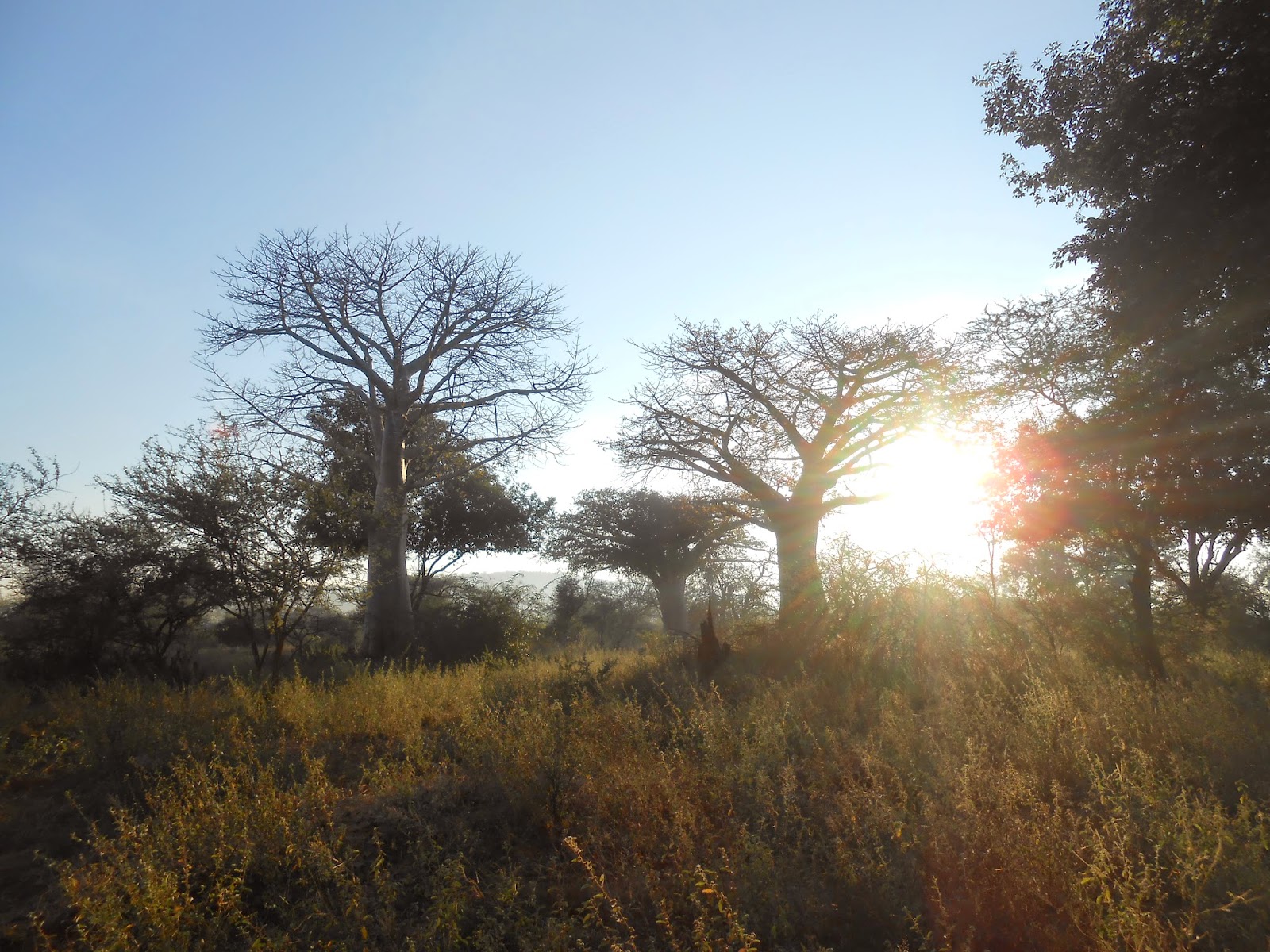"It will be like driving through a zoo," our friend Jacqui had told us as we prepped for our trip.
Jacqui's words had stood in stark contrast to the conservancy's urgent motto, "Kana Yapera, Yapera" (when they're gone, they're gone), and I found myself unsure of what to expect from a place famous for its "dwindling wildlife numbers due to poaching", it's "large populations of tourist-attracting wildlife", its popularity among happily welcomed vacationing hunters, and its farmland. It was confusing. Could all of these things fit into one space? And how?
Though I visited the Save Conservancy a month ago, I still have not gotten around to blogging about it. This usually happens for one of two reasons: A) I am too bored or tired of it to write about it, or B) I have too many fantastic photos and dread having to put into words and pictures such a hard-to-describe place. My lack of motivation up until now falls entirely under the B category. I find myself more motivated suddenly, though, as we have just gotten word that poachers there took out two more rhinos -one with an eleven day old baby- just days after our visit. Though chalked full of animals, these rhinos once again remind us that places like Save need as much help as they can get.
The Save Valley Conservancy is a 3,400 square kilometer trek of land found in the South-East Lowveld of Zimbabwe. It is a "non-profit," though this term is personally confusing, since much of the land within its territory is also used for farming. Though there are many more complex explanations often involving attempts to avoid farm take-overs, here is a snippet from the organization, which (though it looks long) will say things much more succinctly than me:
As the livestock population grew, so the environment deteriorated. Cattle ate all the native fertile vegetation and caused a degradation of topsoil. The result was an overused and unproductive landscape. Over time, a combination of events brought the cattle industry to a standstill.
Fortunately a new black rhino conservation strategy from Zimbabwe’s Department of National Parks and Wildlife Management catalysed the formation of Savé Valley Conservancy. With growing awareness of endangered wildlife and interest in ecotourism, a Conservancy offered an ideal solution.
In 1991 Devuli Ranch was divided into 15 smaller land units, and in November 1992 members agreed to shift operations from cattle ranching to wildlife preservation. Cooperative and respectful interactions between landholders allowed the move to sustainable natural resource management. The wildlife and habitats were acknowledged as assets to be nurtured, to ensure their benefits continued into the future.
Cattle and internal fences were removed, and in conjunction with the Department and the The World Wide Fund for Nature, we began monitoring and managing the restoration of the habitat. In 1995 a 330km electric perimeter fence was built as a protective enclosure to protect the 3400 square kilometers/340 000 hectares of the conservancy.
The main goal of Savé Valley Conservancy was to restore the land’s full natural potential while protecting the black rhinos from extinction. Today we reap the successes of nearly two decades of work, and continue to focus on reinstating the land to a balanced ecosystem.
For those of you tired of reading, here are a few personal photos -selected from my shutter-happy hundreds- to give you a taste of this gorgeous wildlife expanse:


Africa's supermodels: Please appreciate my 8,000 giraffe pictures. I paid them to pose.











We had to forge the Save River to get to the lower half of the conservancy on our route.
Farmland in the middle.
Baobabs galore.



Impala galore, too.






Tracking a herd of buffalo in the hot hot sun.
To read more about the conservancy, please check out their website: http://savevalleyconservancy.org/























